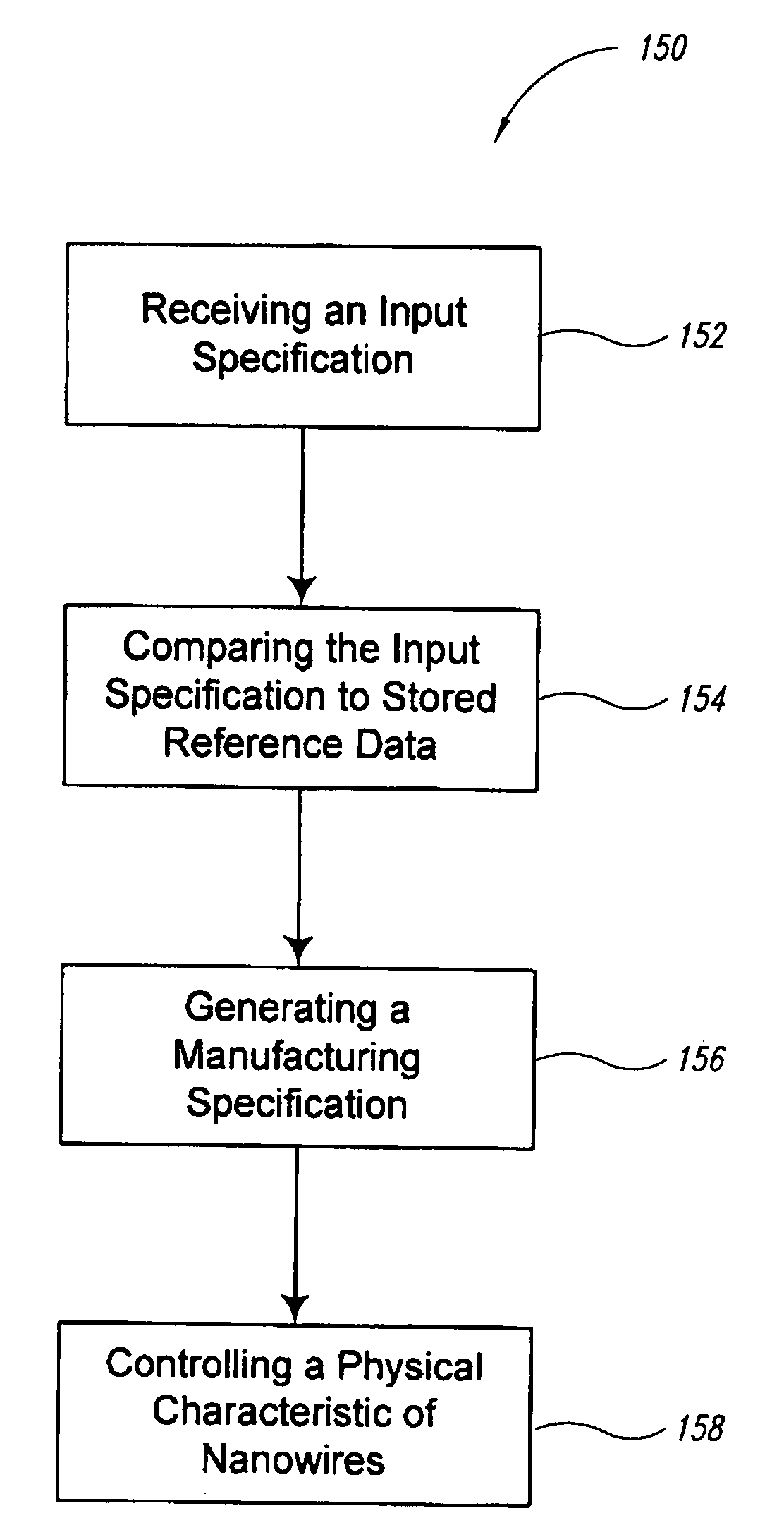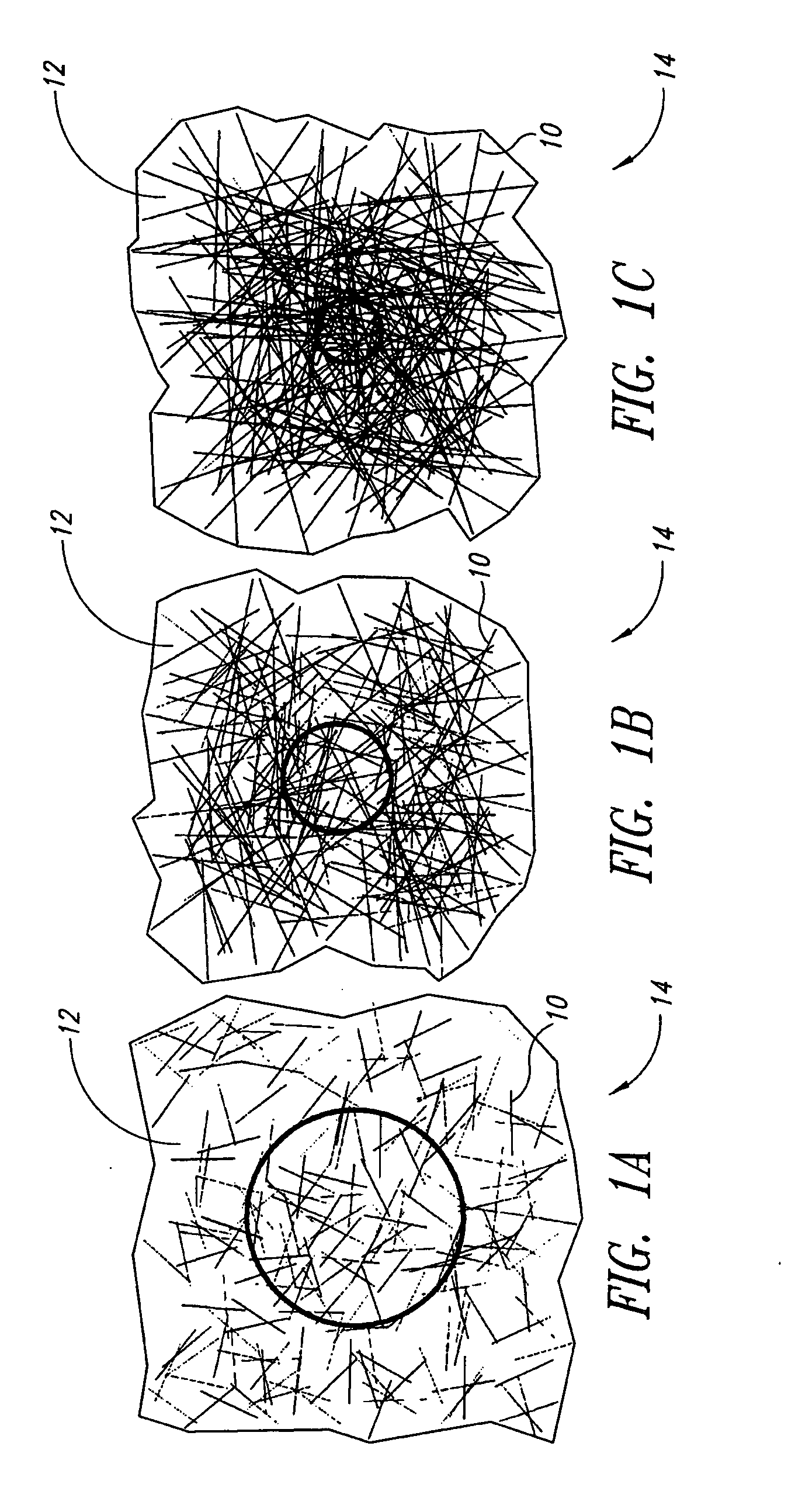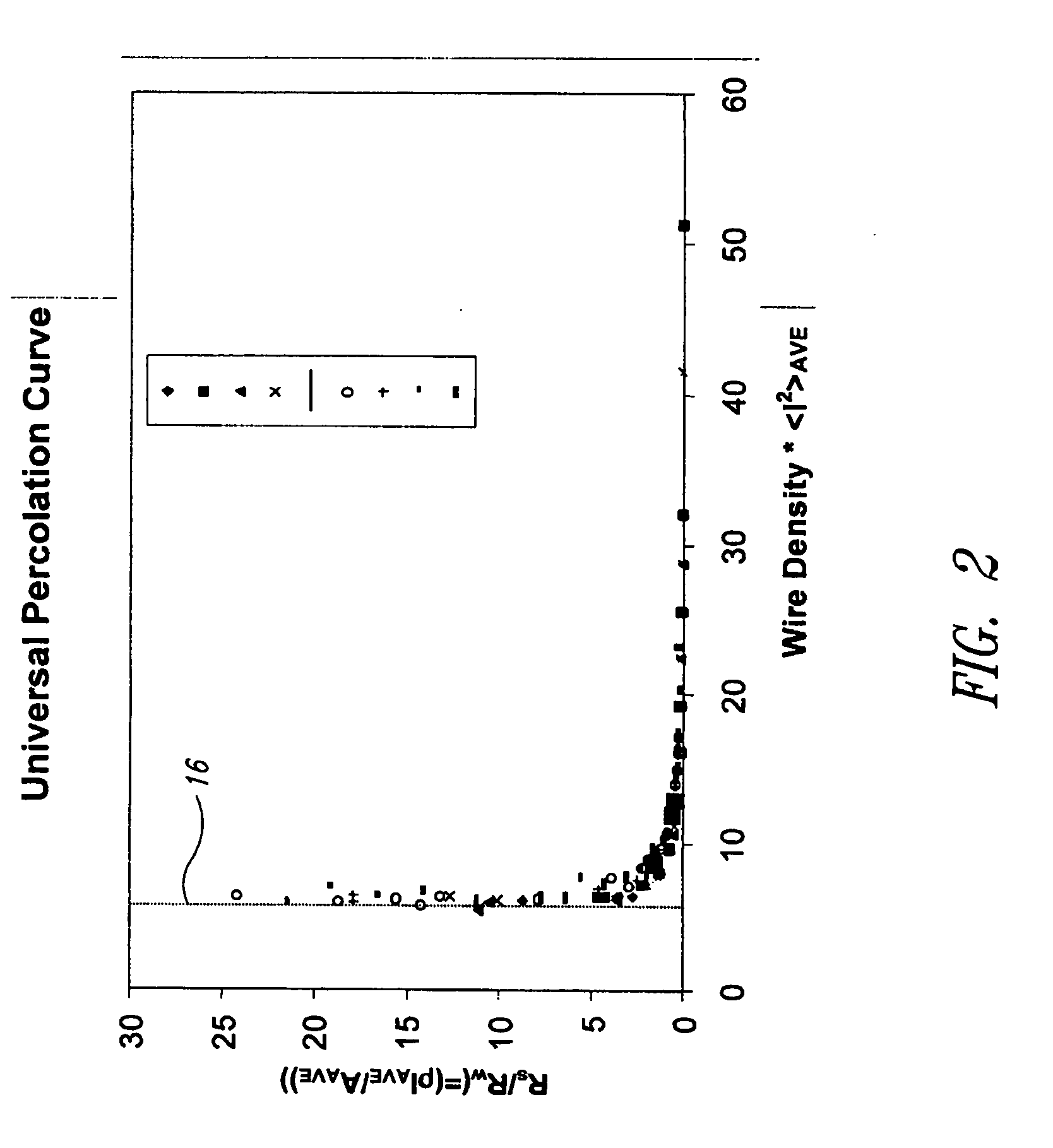Systems, devices, and methods for controlling electrical and optical properties of transparent conductors
- Summary
- Abstract
- Description
- Claims
- Application Information
AI Technical Summary
Benefits of technology
Problems solved by technology
Method used
Image
Examples
example 1
HNO3 Etching
[0103]FIGS. 8A and 8B show SEM images of PET films 50 coated with silver nanowires 10 before and after etching in 25% HNO3. Referring to FIG. 8A, prior to etching, the film 50 exhibited a transparency of 77.7%, a haze of 16.7%, and a resistivity of approximately 40-70 Ohms / sq. Referring to FIG. 8B, after etching for 30 seconds, the film 50 exhibited an increased transparency of 86.8%, a decreased haze of 9.5%, and an increased resistivity of approximately 200-400 Ohms / sq.
[0104]In some embodiments, varying the concentration of HNO3 may vary etching strength. For example, exposing PET films coated with silver nanowires to a 40% HNO3 solution for 1 second resulted in the etching of a substantial portion of the nanowires. Due to the autocatalytic etching nature of the HNO3 mechanism, however, a more stable controllable etching solution may alternatively be used.
example 2
NaNO3 / HNO3 / KMnO4 Etching
[0105]PET films coated with silver nanowires were etched with a solution comprising 5% NaNO3, 5% HNO3, and 0.004% KMnO4. Table 2 shows the transparency, haze, and resistivity of the PET films before and after etching for varying time periods.
TABLE 2Before and After Etching ResultsT (%)H (%)R (Ohms / sq)Before Etching~79~16.2 40~134After 30 s~82.1~12.660.9~90 After 60 s~82.9~11.1131~140After 120 s~82.7~9.91295~310After 240 s~86.7~7.70
[0106]In some further embodiments, etching may also be used to release nanowires synthesized using alumina templated synthesis techniques, template-directed synthesis techniques, and the like. Nanowires under these conditions are typically difficult to separate because the nanowires tend to stick onto the back of the supporting materials (e.g., platinum). Etching may provide a process for thinning the individual nanowires, as well as increasing the distance between the nanowires.
[0107]Some embodiments employ an in-line etching proc...
example 3
Oxygen Plasma Oxidation of Nanowires
[0119]In some embodiments, oxygen plasma techniques can be used to alter the optical and electrical properties of transparent conductors 12. As illustrated by the following example, oxygen plasma was used to alter the properties of a transparent film of silver nanowire on glass. Samples 1-3 comprised fluoroalkylsilanes (FAS) on glass (0.1% HPMC, 200 ppm Triton-X100, 2× nanowires).
[0120]The film is first treated with Argon plasma to render the network conductive, followed by O2 plasma to alter the resistivity, haze, and transmission.
TABLE 4ResistivitiesResistivityPre Ar PlasmaPost Ar PlasmaPost O2 Plasma Sample 150-1000 Ohms / Sq25-50 Ohms / SqNonconductiveSample 250-1000 Ohms / Sq25-50 Ohms / Sq 100-200 Ohms / sqSample 350-1000 Ohms / Sq25-50 Ohms / Sq250-1000 Ohms / sq
TABLE 5Plasma ConditionsO2 Plasma ConditionsPowerDurationFlowPressureSample 150 W15 s25%100 mTorr BPSample 210 W 5 s25%100 mTorr BPSample 310 W10 s25%100 mTorr BP
[0121]As summarized in Tables 4 an...
PUM
 Login to View More
Login to View More Abstract
Description
Claims
Application Information
 Login to View More
Login to View More - R&D
- Intellectual Property
- Life Sciences
- Materials
- Tech Scout
- Unparalleled Data Quality
- Higher Quality Content
- 60% Fewer Hallucinations
Browse by: Latest US Patents, China's latest patents, Technical Efficacy Thesaurus, Application Domain, Technology Topic, Popular Technical Reports.
© 2025 PatSnap. All rights reserved.Legal|Privacy policy|Modern Slavery Act Transparency Statement|Sitemap|About US| Contact US: help@patsnap.com



